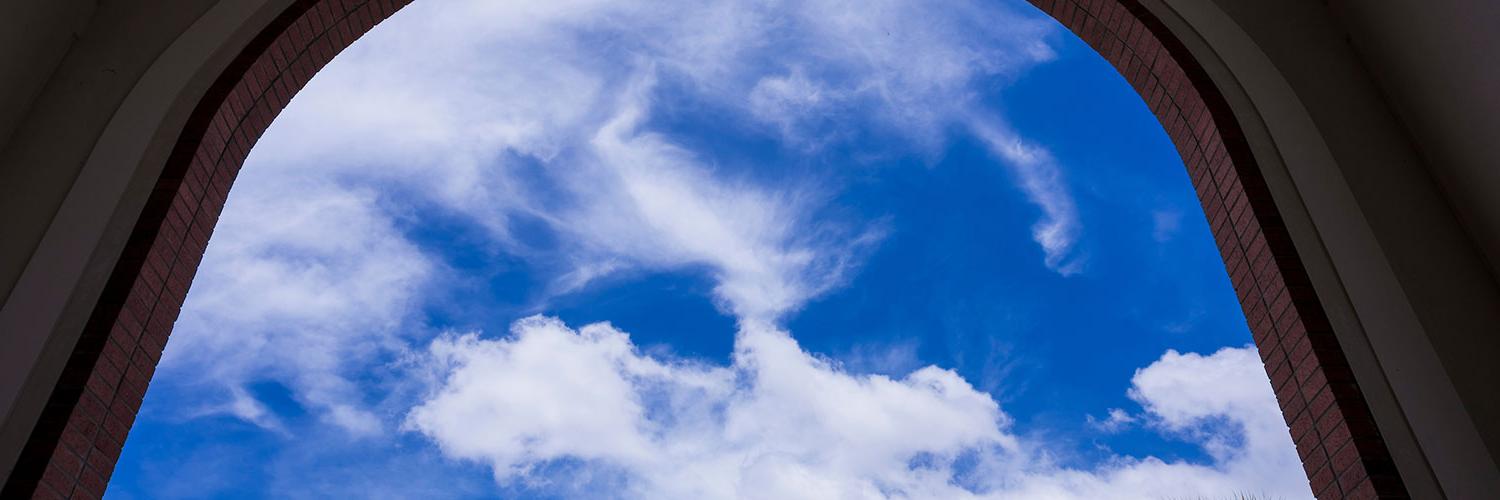
Palmer, Andrew

Andrew George Palmer
Associate Professor | College of Engineering and Science: Department of Ocean Engineering and Marine Sciences
Affiliate Faculty | College of Engineering and Science: Biomedical Engineering and Science, College of Engineering and Science: Chemistry and Chemical Engineering
Associate Department Head & Program Chair | Marine & Environmental Science, Oceanography, and Meteorology
Contact Information
Expertise
Educational Background
2008 Ph.D., Biological Chemistry, Emory University
2001 B.S., Biochemistry, Florida State University
Professional Experience
Fall 2023 - Present | Associate Department Head, Ocean Engineering and Marine Science
2020 - Spring 2023 | Program Chair, Marine Sciences
2018 - 2020 | Associate Professor, Florida Institute of Technology
2012 - 2017 | Assistant Professor, Florida Institute of Technology
2009 - 2011 | Postdoctoral fellow, University of Wisconsin Madison
Additional Duties
Faculty sponsor for Astrobiology Research and Education Society (ARES)
Current Courses
MAR1001: Challenges of the Anthropocene
MAR/BIO1010: Biological Discovery I
MAR/BIO1030: Introduction to Biotechnology
BIO2011/BIO2012: Microbiology/Microbiology Lab
MAR4209/BIO5014: Molecular Biology of Plants/Plant Biotechnology
BIO4100/BIO5573 : Special Topics in Space Biology
MAR4210: Plant Physiology
MAR5029: Chemical Ecology
BIO5585: Protein Structure & Function
Selected Publications
2020-Present
-Fackrell, L.E., Humphrey, S., Loureiro, R., Palmer, A.G., Long-Fox, J.; "Overview and recommendations for research on plants and microbes in regolith-based agriculture" Nature Sustainable Agriculture (2024); http://doi.org/10.1038/s44264-024-00013-5
-Cortez, M., Handy, D., Headlee, A., Montanez, C., Pryor, S., Cutshaw, K., Vanselow, K., Perez, A., Weissman, J., Ziegler, E., Wheeler, B., Palmer, A.G., "Quorum Sensing in the Rhizosphere", In: Horwitz, B.A., Mukherjee, P.K. (eds) Microbial Cross-talk in the Rhizosphere. Rhizosphere Biology. Springer, Singapore. http://doi.org/10.1007/978-981-16-9507-0_5
-Bento, T.S., Moffet, M.B., Centeno, D.C., Scrocco, A.P., Fox, A., Palmer, A.G. "Biomass allocation in response to accession recognition in Arabidopsis thaliana depends on nutrient availability and plant age." Plant Signaling and Behavior (2022) DOI: 10.1080/15592324.2021.2004025
-Ziegler, E.W., Brown, A.B., Nesnas, N., Chouinard, C., Mehta, A.K., Palmer, A.G. “β‐Cyclodextrin encapsulation of synthetic AHLs: drug delivery implications and quorum‐quenching exploits”, Chembiochem, (2021) http://doi.org/10.1002/cbic.202000773
-Handy, D., Hummerick, M.E., Dixit, A.R., Ruby, A.M., Massa, G., Palmer, A.G. "Identification of Plant Growth Promoting Bacteria Within Space Crop Production Systems" Frontiers in Astronomy and Space Science (2021) http://doi.org/10.3389/fspas.2021.735834
-Folick, A.M., Cutshaw, K., Haire, T., Goode, J., Shah, P., Zaidi, P., Richardson, B., Palmer, A.G. “Quorum sensing behavior in the model unicellular eukaryote Chlamydomonas reinhardtii”, iScience (2020) 23. http://doi.org/10.1016/j.isci.2020.101714
-Eichler, A., Hadland, N., Pickett, D., Masaitis, D., Handy, D., Perez, A., Batcheldor, D., Wheeler, B., Palmer, A.G. “Challenging the agricultural viability of Martian Regolith Simulants”, Icarus (2020) 354 http://doi.org/10.1016/j.icarus.2020.114022
- Folick, A.M., Haire, T.C., Cutshaw, K., Riddle, M., Shola, C., Nassani, S., Rice, P., Richardson, B., Shah, P., Nazamoddini-Kachouie, N., Palmer, A.G. "Computer assisted tracking of Chlamydomonas species" Frontiers in Plant Biology, (2020) 31 http://doi.org/10.3389/fpls.2019.01616
2019-2010
- Ziegler, E.W., Brown. A.B., Nesnas, N., Palmer, A.G. “Abiotic Hydrolysis Kinetics of N-Acyl-L-homoserine lactones: Natural Silencing of Bacterial Quorum Sensing Signals” European Journal of Organic Chemistry (2019) http://doi.org/10.1002/ejoc.201900322
- Palmer, A.G., Senechal, A.C., Haire, T.C., Mehta, N.P., Valiquette, S.D., Blackwell, H.E."Selection of appropriate autoinducer analogs for the modulation of quorum sensing at the host-bacteria interface" ACS Chemical Biology (2018) DOI: 10.1021/acschembio.8b00676
- Haire, T.C., Bell, C., Cutshaw, K., Swiger, B., Winkelmann, K., Palmer, A.G., "Robust Microplate-Based Methods for Culturing and In Vivo Phenotypic Screening of Chlamydomonas reinhardtii" Frontiers in Plant Science (2018) http://doi.org/10.3389/fpls.2018.00235
- Haire, T.C., Patel, D., Patel, K., Jariwala, J., Laite, J., Lazar, S., Palmer, A.G., "Regulation of Arabidopsis thaliana Physiological Responses Through Exogenous Electrical Field Exposures with Common Lab Equipment" Journal of Plant Growth Regulation (2018) http://doi.org/10.1007/s00344-017-9725-3
- Fuller, A.W., Young, P., Pierce, B.D., Kitson-Finuff, J., Jain, P., Schneider, K., Lazar, S., Taran, O., Palmer A.G., Lynn, D.G., “Redox-Mediated Quorum Sensing in Plants” PLoS ONE (2017). http://doi.org/10.1371/journal.pone.0182655. Highlighted:
- Haire, T., Patel, D., Patel, K., Jariwala, J., Laite, J., Lazar, S., Palmer, A.G. "Regulation of Arabidopsis thaliana Physiological Responses Through Exogenous Electrical Field Exposures with Common Lab Equipment" Journal of Plant Growth Regulation (2017), 36. http://dx.doi.org/10.1007/s00344-017-9725-3
- Bernas, L., Winkelmann, K., Palmer, A.G. "Phytoremediation of Silver Species by Waterweed (Egeria densa)" The Chemist (2017), 90, 7-13
- Palmer, A.G., Mukherjee, A., Stacy, D.M., Lazar, S., Ane, J.M., Blackwell, H.E. “Interkingdom responses to bacterial quorum sensing signals regulate frequency and rate of nodulation in the legume-rhizobia symbiosis” Chembiochem (2016), 17, 2199-2205
- Palmer, A.G., Ali, M., *Yang S., Parchami, N., Bento, T., *Mazzella, A., Oni, M., *Riley, M.C., Schneider, K., *Massa, N-. "Kin recognition is a nutrient-dependent inducible phenomenon" Plant Signaling and Behavior (2016) http://dx.doi.org/10.1080/15592324.2016.1224045
- Palmer, A.G., Senechal A., Mukherjee, A., *Much, E., Ané, J.M., Blackwell, H.E. “AHLs modulate plant growth and development through the activity of a fatty acid amide hydrolase” ACS Chemical Biology (2014) http://dx.doi.org/10.1021/cb500191a
- Palmer, A.G., Streng, E., Blackwell, H.E. “Attenuation of virulence in pathogenic bacteria using synthetic quorum-sensing modulators under native conditions on plant hosts” ACS Chemical Biology (2011), 6, 1348-1356
- Palmer, A.G., Streng, E., Jewell, K., Blackwell, H.E. “Quorum Sensing in Bacterial Species that Use Degenerate Autoinducers Can Be Tuned Using Structurally Identical Non-Native Ligands” ChemBioChem (2011), 12, 138-147
Highlighted: -Microbe (2011), 6, 161-162
Research
Sustainable Space Agriculture Systems - As manned space exploration extends further from Earth, the continuous shipment of goods will become prohibitively expensive and failed shipments may have lethal consequences. One approach for limiting both initial as well as sustained mission costs is through the implementation of strict in situ resource utilization (ISRU) requirements. ISRU focuses on the extraction and exploitation of existing resources at the colony site. With NASA’s 2040 Mars deadline on the horizon, ISRU research will deliver sustainable, economically viable solutions for these future colonists and a blueprint for future manned ventures into the cosmos.
Quorum sensing in Chlamydomonas reinhardtii - Quorum sensing is a signaling process among unicellular organisms which couples phenotypic switching to cell density. We have identified the presence of this phenomenon in the model unicellular eukaryote, Chlamydomonas reinhardtii.
Educational Interests
- Problem-based learning methods
- Deployment of real-time classroom interaction software
- Peer-driven projects
- Team teaching
- Improving scientific communication
- Community outreach


 Give to Florida Tech
Give to Florida Tech